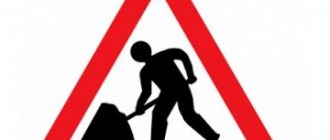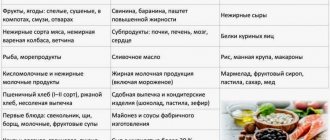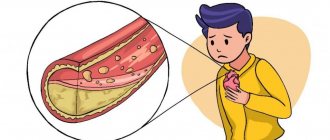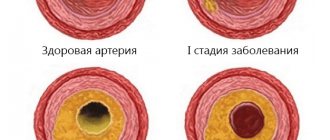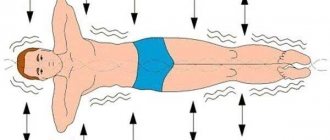Multislice (multilayer) computed tomography allows you to study the heart and the coronary arteries surrounding the organ. The examination is carried out using a high-tech multislice tomograph. The essence of the method is the passage of a directed flow of X-rays through cardiac and arterial tissues with recording of the reflected signal using high-sensitivity detectors. As a result of this most informative diagnosis, it is possible to create three-dimensional projections of the heart and find any pathologies of the heart chambers, pericardium, and myocardium
. The advantages of the method also include minimal procedure time and an affordable price.
What allows you to research what diseases to identify
Using MSCT of the heart, you can accurately diagnose:
- Ischemic disease
- Aneurysms
- Pathologies of the cardiac aorta and coronary arteries of the heart
- Congenital anomalies of the cardiovascular system
- Acquired heart defects (eg, aortic valve calcification)
- Peripheral heart artery disease
- Pulmonary thromboembolism
The examination is often carried out in acute conditions of the patient, which are accompanied by severe pain in the thoracic region - pneumothorax, myocardial ischemia, etc.
Scientific Center for Cardiovascular Surgery of the Russian Academy of Medical Sciences. Bakuleva
Our Center is a leading modern research, treatment, advisory and production complex in the Russian Federation, which, based on the traditions of scientific schools, close connections with fundamental and applied science, using high innovative medical technologies, ensures high-quality and effective provision of medical services to patients with heart disease. -vascular diseases.
The Center, by maintaining the high quality of surgical treatment of heart and vascular diseases, ensures the growth of its competitiveness and prestige. The Center strives for domestic and international recognition in the field of training specialists in cardiovascular surgery and related specialties. The main goal of the Center is to improve the health and reduce mortality of the Russian population from cardiovascular diseases through continuous improvement of the quality of medical services, meeting the requirements and expectations of consumers. “I have a very reverent relationship with my heart...
I can’t imagine a more beautiful creature... The heart is incredibly beautiful. It’s so harmonious, synchronized... I think nature has never created anything like it.” L. A. Bokeria Night flight with Andrey Maximov.
Anniversary. Culture. Leo Antonovich Bockeria is a leading cardiac surgeon, a famous scientist and organizer of medical science. Born on December 22, 1939 in the city of Ochamchira, Abkhaz Autonomous Soviet Socialist Republic. In 1965, L. A. Bockeria graduated from the 1st Moscow Medical Institute named after I. M. Sechenov of the USSR Ministry of Health and entered graduate school at the Department of Topographic Anatomy and Operative Surgery with Academician of the USSR Academy of Medical Sciences V. V. Kovanov. In 1968, having completed his graduate studies, Leo Antonovich was assigned as a senior researcher to the A. N. Bakulev Institute of Cardiovascular Surgery, with whom he forever connected his life. From 1974 to 1977 supervised the hyperbaric oxygenation laboratory. From 1977 to 1993 worked as deputy director for science, head of the department of surgical treatment of cardiac arrhythmias. Since September 1994, Leo Antonovich Bockeria has been acting, and since November 1994, director of the Scientific Center for Agricultural Sciences named after. A. N. Bakuleva RAMS. Since 1994, Leo Antonovich Bockeria has been the Chairman of the Academic Council and the Chairman of the dissertation council of the Scientific Center for Agricultural Sciences named after. A. N. Bakuleva RAMS. International recognition of the works of Leo Antonovich Bokeria is his election as a full member of the American Association of Thoracic Surgeons (1991), a member of the European Society of Thoracic and Cardiovascular Surgeons and the International Cardiothoracic Center of Monaco (1992), a member of the Serbian Academy of Sciences (1997), a member of the Faculties of a number of regular international conferences in France, Italy, Switzerland, member of the editorial boards of journals in the USA, Great Britain. Leo Antonovich Bockeria repeatedly traveled abroad to perform demonstration operations and performed the first successful operations for tachyarrhythmias in Italy and Poland. Of particular note is the election of L. A. Bockeria in 1998 as an Honorary Member of the American College of Surgeons, the highest title in the surgical hierarchy. Since 2003, Leo Antonovich has been a member of the Presidium (consul) of the European Society of Thoracic and Cardiovascular Surgeons. Leo Antonovich Bockeria – President of the Russian Scientific Society of Cardiovascular Surgeons. since 1995. In this capacity, he achieved the holding of regular congresses with the wide participation of nursing staff and young specialists, and attracted leading foreign surgeons to give lectures and demonstrate operations. Leo Antonovich Bockeria - during 1993-1998. was the Chairman of the Committee of the Ministry of Health of the Russian Federation and the Russian Academy of Medical Sciences on antiarrhythmic implantable devices and electrophysiology, and since 1998 - Director of the Center for Surgical and Interventional Arrhythmology of the Russian Federation Ministry of Health. In this capacity, he contributed to the creation of the most important regulatory documents, the creation of new types of electrical stimulators, and the formation of regional centers. Leo Antonovich Bockeria is the editor-in-chief of a number of journals: “Annals of Surgery”, “Childhood Heart and Vascular Diseases”, “Bulletin of the Scientific Center for Cardiovascular Surgery named after. A. N. Bakuleva RAMS “Cardiovascular Diseases”, “Creative Cardiology”, “Annals of Ari”, “Bulletin of Lymphology”, information collection “Cardiovascular Surgery”. Together with Academician of the Russian Academy of Sciences V.S. Savelyev, L.A. Bockeria is the editor-in-chief of the journal “Breast and Cardiovascular Surgery”. Leo Antonovich was also the initiator of the creation of the popular science publication “Doctor”. In June 2003, Leo Bockeria was elected President of the All-Russian public organization “League of National Health”, in the creation of which the most prominent scientists, literary and artistic figures, athletes, politicians, and businessmen participated. The League’s mission is to achieve the creation of a model of self-development in medicine, develop “sport for all,” strengthen the family, spread the experience of a healthy and active lifestyle, create conditions for the spiritual and physical development of the individual, and the revival of national cultural traditions. Since 2003, Leo Bockeria has been a member of the Presidium of the Russian Academy of Medical Sciences. In 2005, Leo Antonovich was elected a member of the Public Chamber of the Russian Federation under the President of Russia. From 2006 to 2009 - Chairman of the Commission of the Public Chamber of the Russian Federation on the formation of a healthy lifestyle.
Contraindications
- Pregnancy is one of the main contraindications; exceptions are cases where the lack of immediate diagnosis entails a danger to the patient’s life
- Atrial fibrillation
- Mental disorders
- Heart rhythm disturbance
Also, diagnostics are not performed using a multislice tomograph if the patient is diagnosed with hyperthyroidism, according to tests, the creatinine level is above 130 µM/l, there is a history of severe bronchial asthma and an allergy to iodine-containing drugs. It may be difficult to undergo the examination in patients whose weight is 170-180 kg or more.
How is coronary angiography done?
The accuracy of the diagnosis and the likelihood of complications depend on how and how professionally a coronary angiography of the heart is performed. Since this procedure is invasive and causes discomfort to the patient, it is done under local anesthesia. The order of execution is as follows:
- after the onset of anesthesia, a puncture is made in a vein (in the leg, in the groin area) and a special tube is inserted into it, through which a catheter is then inserted;
- the catheter is advanced through the veins to the heart;
- an iodine-based contrast agent is supplied through the catheter, which spreads throughout all coronary vessels;
- the entire examination process is displayed on the monitor, the doctor takes pictures;
- After completing the examination, a tight bandage is applied to the puncture site.
Coronary angiography of the heart vessels through the arm
If the abdominal aorta or leg arteries are affected, inserting a catheter into the groin area may be difficult or impossible. In such cases, an alternative method is used - coronary angiography of the heart vessels through the arm. The catheter is inserted through a puncture in the arm and also moves as close to the heart as possible. Then contrast is applied and x-rays are taken.
When the catheter is inserted through the arm, the artery may spasm or a blood clot may develop. For this reason, this method poses a high risk of complications for the patient.
How long does a coronary angiography take?
Coronary angiography can last from 30 to 60 minutes, depending on how severe the condition of the patient's heart vessels is. After the procedure, the patient needs to stay in the hospital for about 2-3 days to fully recover and avoid complications.
How to undergo coronary angiography?
After the procedure, the patient needs a gentle regime. It is necessary to generally limit physical activity and for some time after coronary angiography not to move the limb in which the puncture was performed. It is also necessary to drink plenty of fluids, which will prevent possible kidney dysfunction.
Advantages of scintigraphy at the Sofia Oncology Center
Advantages of treatment in oncology:
- Use of modern equipment. In oncology, the scintigraphy procedure is carried out using the latest equipment that meets international standards of medical practice.
- High level of specialist training. Examination and diagnosis of patients in oncology are carried out by experienced specialists who regularly undergo training in leading American and Israeli clinics.
- Convenient location. The oncology department is located in Moscow (TsAO). There are several metro stations in our immediate vicinity: Novoslobodskaya, Tverskaya, Chekhovskaya, Belorusskaya and Mayakovskaya.
Preparing for the study
Even before the CAG, the cardiologist talks in detail about the goals and progress of the study, and the necessary preparation. A medical history is required: information about medications taken, allergic reactions, and surgical interventions undergone is important. Some medications need to be discontinued a couple of days before surgery, but this decision is made solely by a specialist after assessing the possible risks. Several hours before a planned coronary angiography, it is recommended to avoid fluid and food intake. For femoral access, it is necessary to shave the groin area the day before.
Indications for scintigraphy
Using scintigraphy, you can evaluate the blood supply to the heart muscle, determine the degree of failure (if detected), see scarred areas and necrotic areas. Myocardial scintigraphy also allows you to assess the likelihood of complications. The treatment strategy depends on the study. Cardiologists may prescribe scintigraphy in cases such as:
- diagnostics before operations, sports activities;
- study of cardiac contractility, diagnosis of coronary artery disease;
- monitoring the effectiveness of treatment;
- assessment of heart function after myocardial infarction;
- identifying the causes of pain in the chest area;
- repeat scintigraphy for resumption of angina after surgery;
- confirmation of certain types of diseases, in particular myocardial infarction with a questionable ECG;
- assessment of the effectiveness of coronary angioplasty and thrombolysis.
Myocardial perfusion scintigraphy is also performed in other cases. We suggest contacting a cardiologist at our clinic, who will conduct a detailed consultation and tell you about the details of scintigraphy.
Types of cardiac scintigraphy
There are two main types of procedure:
- myocardial scintigraphy at rest;
- load study.
Both methods have their own characteristics, advantages and disadvantages. Cardiologists often recommend stress testing because it is more effective. But in certain cases it cannot be done. In our oncology department, both methods of examination are performed. The cardiologist will determine which method is best for you and prescribe the procedure.
Scintigraphy at rest
A procedure without a stress test provides less information, so experts prefer to choose a study with bicycle ergometry. However, in certain cases it is impossible to perform a scintigraphy procedure: for example, with permanent cardiac pacing. Therefore, myocardial scintigraphy is performed at rest. It is indicated in cases:
- chest pain of unknown etiology;
- pacemaker or left bundle branch block;
- lack of information when conducting stress tests;
- determination of scar changes during a heart attack and assessment of blood supply.
The specialist pays attention to the individual characteristics of the patient and chooses a diagnostic method.
Load scintigraphy
Myocardial scintigraphy in this case is carried out using a special exercise bike, while an ECG is recorded in parallel. The study provides more accurate results. If there are no contraindications, the specialist recommends choosing this particular diagnostic method.
If physical activity is contraindicated, doctors may suggest medications that increase blood flow to the heart muscle. They simulate loads.
After the diagnosis, the specialist examines images obtained when the patient is at rest and during physical activity. If they are the same, then blood circulation is not impaired. If there are darkened areas, their nature is determined and a diagnosis is made.
